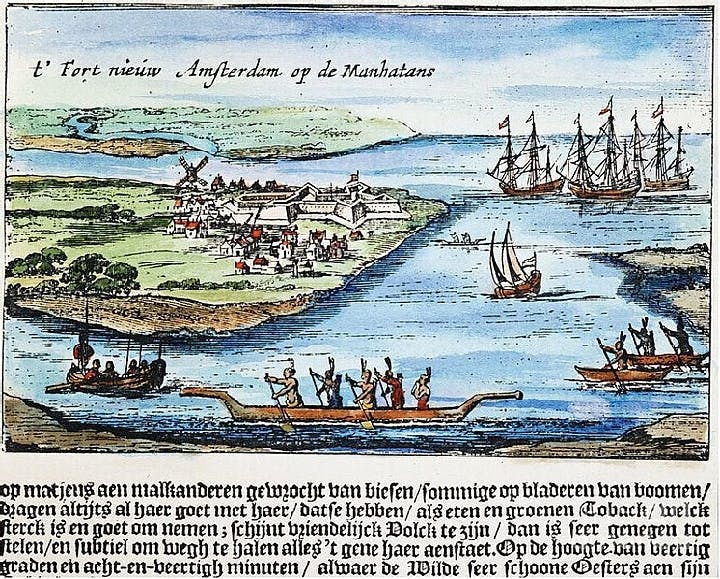Fall 2010
How Religious Toleration Came to America
– The Wilson Quarterly
New Amsterdam was no beacon of religious toleration.
Six years ago, historian Russell Shorto rescued the life of one Adriaen van der Donck from obscurity. Van der Donck, as Shorto told it, was one of the earliest advocates in the New World of a republican system of government and Dutch-style religious toleration. Upon the foundation Van der Donck laid, New Amsterdam flourished and its institutions became a model for America. In the academic world, many delighted in seeing the English philosopher John Locke—traditionally credited with popularizing the idea of religious freedom—knocked off his pedestal.
It’s a nice yarn, writes Jeremy Dupertuis Bangs, director of the Leiden American Pilgrim Museum in the Netherlands, but no more than that. None of Van der Donck’s writings—published or otherwise—touch upon religious toleration. He doesn’t make any appearances in the colony’s records arguing for toleration.
New Amsterdam was no beacon of religious toleration. The authorities discriminated against Jews, Lutherans, and Baptists, among others. In 1657, English colonists on Long Island sent a request to the New Amsterdam government for religious freedom for Quakers. The petition (now called the Flushing Remonstrance) was denied and not thought of again until the 19th century. It was hardly the forerunner of the Bill of Rights, as some now imagine.
“With sophistry bordering on hypocrisy, tolerant New Netherland offered its inhabitants freedom to believe whatever they wanted, as long as their belief did not extend to religious exercises outside the family circle—no preaching, no prayer meetings, no group discussions of theology,” Bangs writes. One Quaker preacher was dragged through the streets behind a cart.
The Flushing Remonstrance was the product of a misunderstanding. Many in the English-speaking world of the mid-17th century thought there was religious toleration in Holland because the text of the Union of Utrecht (1579) had circulated widely in translation. The treaty unified the northern, Protestant provinces of what would eventually become the Netherlands against a perceived threat from the united support of the southern, Catholic provinces for the Spanish king. It promised that “every particular person shall remain free in his religion.”
But just two years later, under pressure from the Dutch Reformed Church (Calvinist), the Dutch government banned the Catholic Mass and shuttered Catholic monasteries and convents. The Synod of Dort (1618–19) marked the effective end of the Union of Utrecht and led to a further crackdown that encompassed even non-Calvinist Protestants. The English-speaking world was mostly unaware of these developments.
Dutch dissenters, largely from Mennonite and Remonstrant churches, continued to plead for religious toleration in their own country. Of particular importance are the works of Philip van Limborch, a Remonstrant theologian whose writings and friendship deeply influenced John Locke. Locke dedicated his 1689 Letter on Toleration to Van Limborch. It’s through the connection between these two men that religious liberty spread to the English colonies, according to Bangs, and reached Thomas Jefferson’s pen.
THE SOURCE: “Dutch Contributions to Religious Toleration” by Jeremy Dupertuis Bangs, in Church History, Sept. 2010.
Image courtesy of Wikimedia Commons
